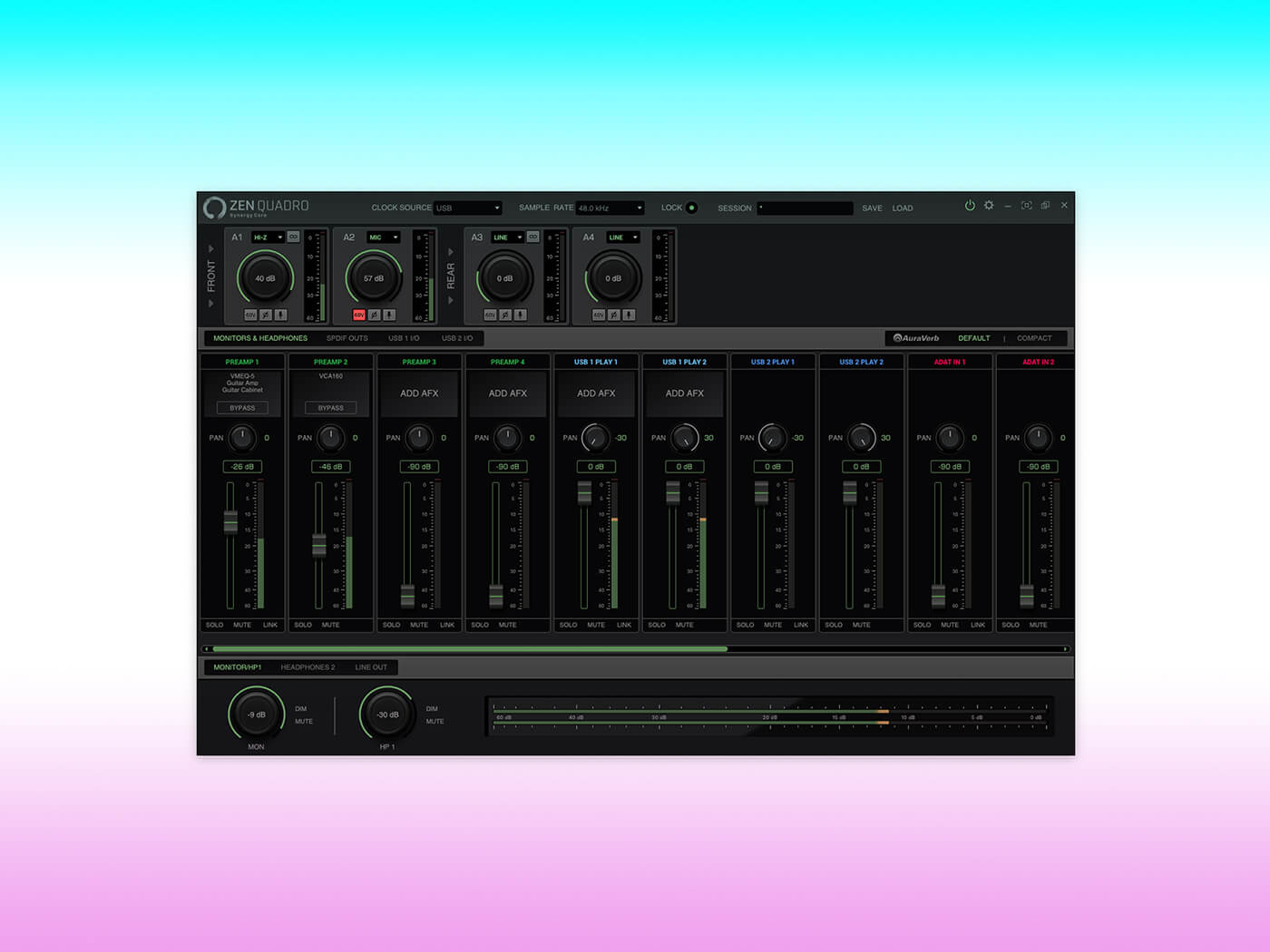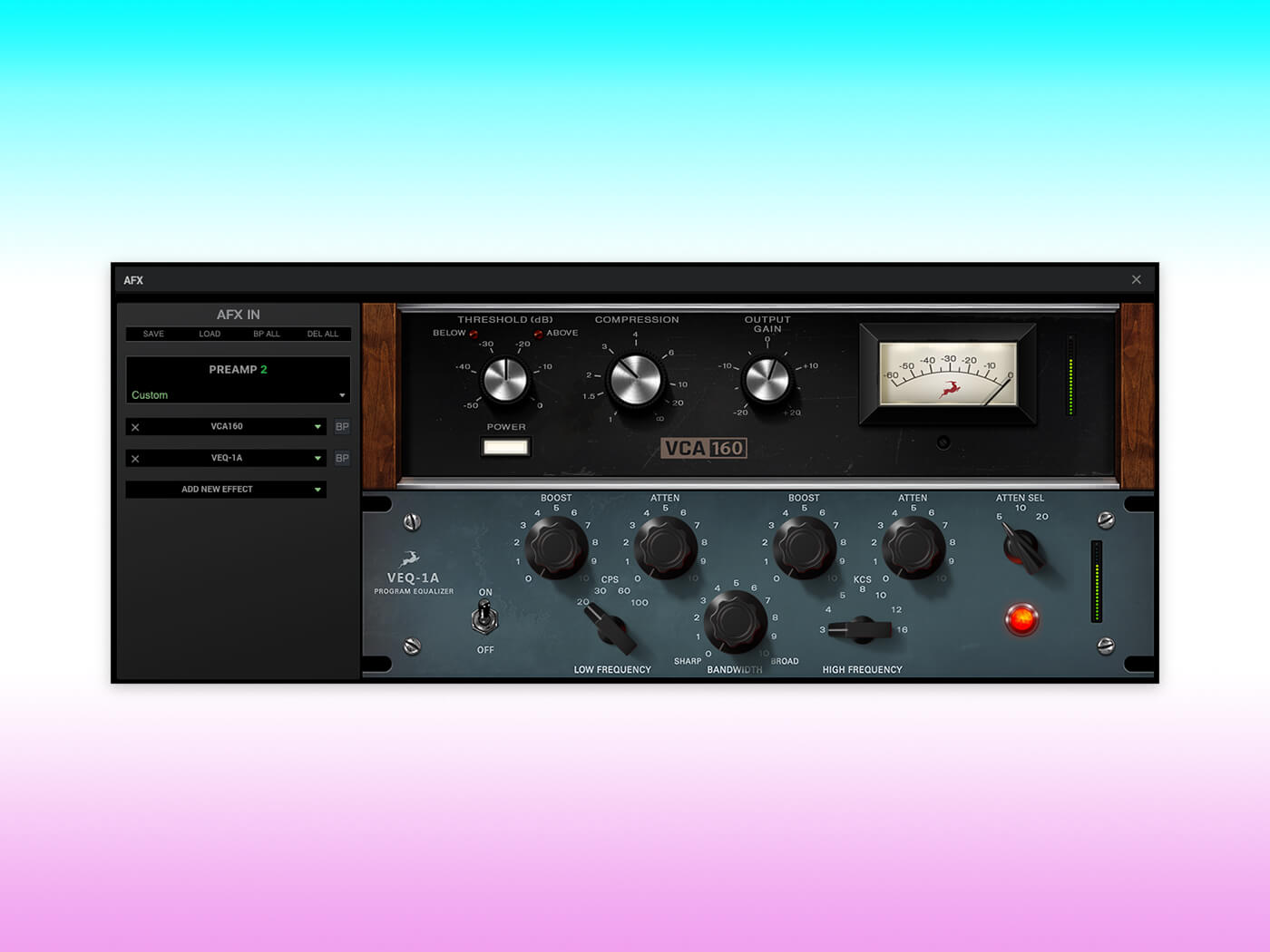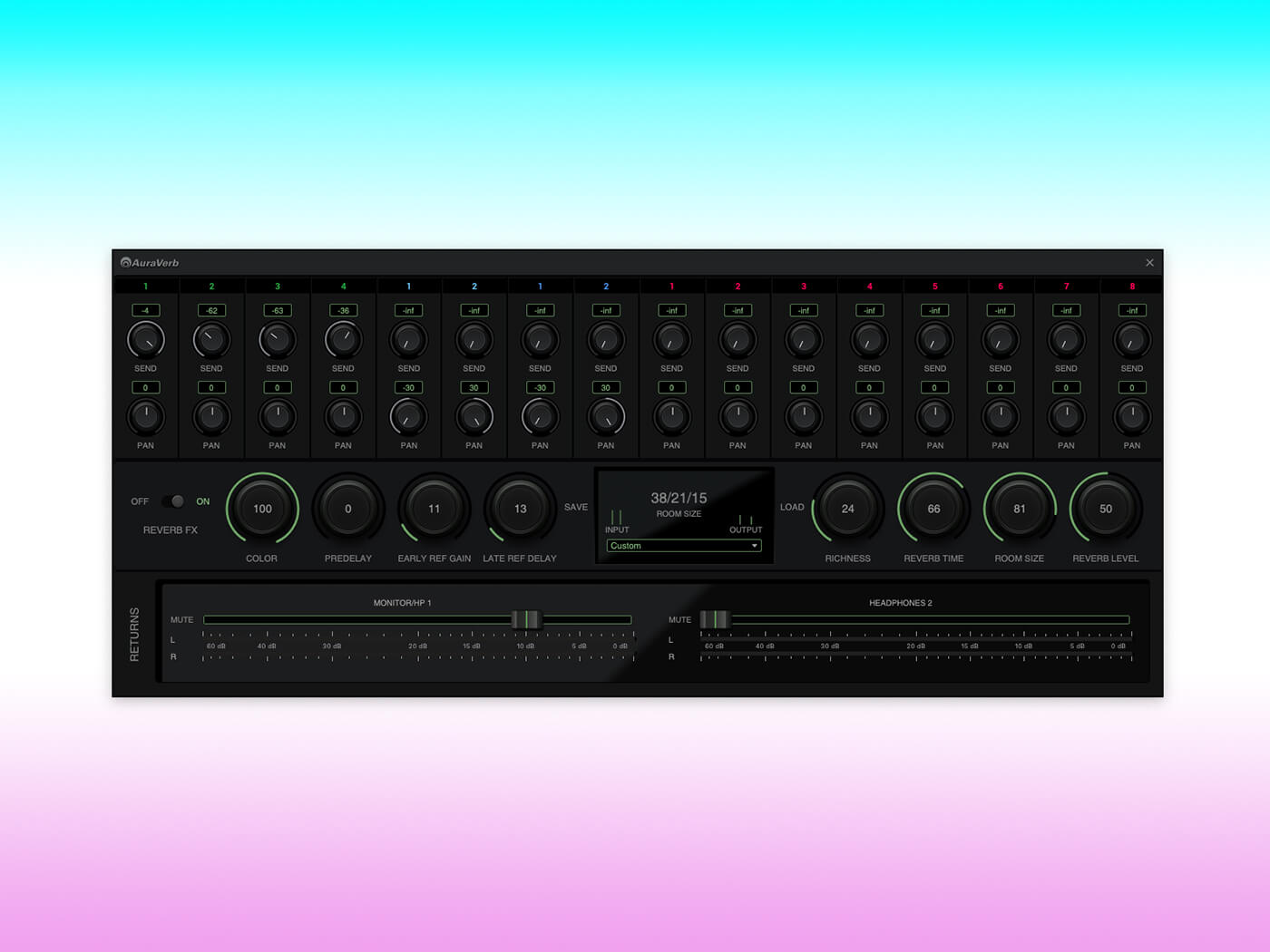Antelope Audio Zen Quadro review: Function over form means huge bang for your buck
A budget of $600 opens up a choice of many excellent audio interfaces, but you may be surprised at just how much Antelope Audio gives you for your money

Antelope Audio Zen Quadro
Review Overview
Our rating
8
Our verdict
⊕ Discrete preamp circuits recreate the sound of classic consoles
⊕ On-board effect processing with Synergy Core DSP
⊕ Can operate standalone, and can connect to two hosts
⊕ Features comparable to significantly pricier interfaces
⊖ On-board effects can't be applied in real-time from DAW
⊖ Build quality is lesser than competitors
€599/$599, antelopeaudio.com
Having established a formidable reputation in the field of digital clock and converter technology, it’s not a surprise that Antelope Audio developed its own line of professional audio interfaces.
The company’s flagship Galaxy series features some highly-respected interfaces. While these may be beyond the means of most small studios, home producers and content creators, the expertise and technology that underpins Galaxy is available in the more affordable form of Antelope’s Zen range.
Digging into specifications, the newest addition to that range, Zen Quadro, promises to outperform interfaces costing between far more, and to wipe the floor with similarly-priced competitors. So we wonder — is this on-paper promise matched by on-the-job performance?
From standalone to multi-host
Zen Quadro has a sleek and solid all-metal desktop case that’s neither chunky nor compact, and that sports an uncluttered control panel featuring just one large dial, three buttons and a high-resolution colour display. Configuration and set-up can be performed directly from the hardware if desired, thereby allowing fully standalone operation as a mixer for studio, broadcast or live situations.
The interface connects to the computer via its primary USB-C port, which communicates via USB-2. It works with any device that supports the USB Class Compliant standard, but for tighter integration with the host there’s also a unified driver for macOS and Windows.

There’s also a secondary USB-C port. This isn’t just a USB hub or pass-through, as found on some units. Rather, this serves the unusual and unique function of enabling Zen Quadro to be hooked up to two hosts at the same time. While this might sound like a zany concept, if you think of Zen Quadro as a mixer, and the host computers/devices simply as sources and destinations connected to that mixer, it all starts to make sense.
There are a few ways in which this is useful too. For example, you may have instruments running from an iPad and want to route these to your main DAW or, in a live situation, to mix them with other synth outputs. Or, in a streaming/programme-making scenario, the second USB port makes it easy to route audio from phone-in guests or other apps into your show’s audio stream.
What inputs and outputs does the Zen Quadro have?
The interface’s four analogue inputs are served by combo XLR/Jack sockets, and so all can operate as either mic or line-level inputs. The first pair of inputs, located on the unit’s front panel, can also be switched into instrument mode for connecting electric guitars and the like.
When designing the preamps, Antelope took inspiration from premium Langevin and Altec designs, as found on many classic large-format consoles. What it came up with employs the same discrete six-transistor design, delivering up to 75 dB of low-noise gain and recreating the clarity and musicality of classic console preamps. They really do sound good!
Adding to these four exceptional input channels is an ADAT optical input for injecting up to eight additional channels (dependent on sample rate), plus a stereo coaxial S/PDIF input. This brings the maximum input count to an impressive 14, although you will of course need external hardware in order to make use of the digital inputs.

On the other side of the equation are Zen Quadro’s ten output channels. There’s the main pair of outputs for connection to a monitoring system, along with a second pair of line outs that can be used for creating alternative monitor mixes, hooking up to external processors, and so-on. A nice feature for modular synth enthusiasts is that these line outputs can be switched to DC-coupled mode (as can the line inputs), and so can carry CV and gate signals to and from your computer.
The main mix output is mirrored in the first of two 6.35 mm headphone outputs, with the second carrying its own independent mix. The final pair of outputs are sent via a coaxial S/PDIF, and these can have any of Zen Quadro’s internal buses routed to it. That’s a choice of 34 different sources, including all inputs, DAW returns, and two internal loopback buses.
How does the Zen Quadro sound?
Antelope has loaded Zen Quadro with exactly the same converters found in its €4,000+ Galaxy interfaces, teamed up with the latest iteration of its proprietary 64-bit AFC (Acoustically Focused Clocking) technology. As a result, every subtle sonic nuance is reproduced faithfully, building an aural image that is sumptuously wide and deep with remarkable clarity and positional accuracy.
Zen Quadro also includes Antelope’s Synergy Core onboard digital signal processing (DSP). This drives a mic modelling stage linked to the preamp, as well as allowing chains of Antelope’s Synergy Core FX processors to be loaded on the first six internal mixer channels. These are typically used to handle the four analogue inputs and the main “from DAW” bus, but can have any source routed to them.

Offloading some of the host computer’s processing duties is clearly advantageous, and allows effects to be applied to direct monitor feeds without the latency that results from a round trip through a DAW. Unlike platforms such as Universal Audio’s UAD-2, however, Synergy Core FX are intended solely as an alternative to expensive outboard processors; unfortunately they cannot be applied as plugins within the DAW.
The interface comes with a healthy collection of 37 processors ideal for input and output conditioning – EQs, dynamics processors, preamp and mic emulations and so-on – with many more available to buy. Guitarists will be particularly interested in the stack of modelled guitar amps and cabs that turn Zen Quadro into an impressive guitar preamp too.
In addition to these channel insert processors, Synergy Core also powers a flexible, rich-sounding reverb, AuraVerb, that operates as a send effect. Although intended largely as a live monitoring and mixing effect, it is possible to bus the reverb into your DAW via a loopback bus if you feel the need to.
Can the Zen Quadro beat its competitors?
Zen Quadro is an impressive audio interface, packed with high-end features and – most importantly – exceptional audio fidelity. But perhaps the most impressive thing is the asking price, the unit being considerably more affordable than anything else with similar specs and capabilities.
Some of that value comes from the design of the enclosure, which is more basic than the sleek curviness of the similarly-specified UA Apollo Twin and Apogee Symphony Desktop. The physical controls, while solid, also lack the silky sumptuousness of those found on competitors.
Nevertheless, Zen Quadro shapes up where it counts most, its pro-grade features and exceptional sound quality placing it squarely alongside these pricier options. Indeed, it’s far ahead of any similarly-priced interface.
Zen Quadro key features
- 4 analogue inputs plus up to 10 digital inputs
- 4 line outs, 2 stereo headphone outs and stereo digital out
- Line ins and outs can be DC-coupled
- Discrete console-grade preamps
- On-board Synergy Core DSP and 37 included plugins
- USB-2 class compliant
- Unified driver for macOS and Windows
- Standalone operation mode
- Dual host operation mode
- Two internal stereo loopback busses
- 64-bit AFC clocking